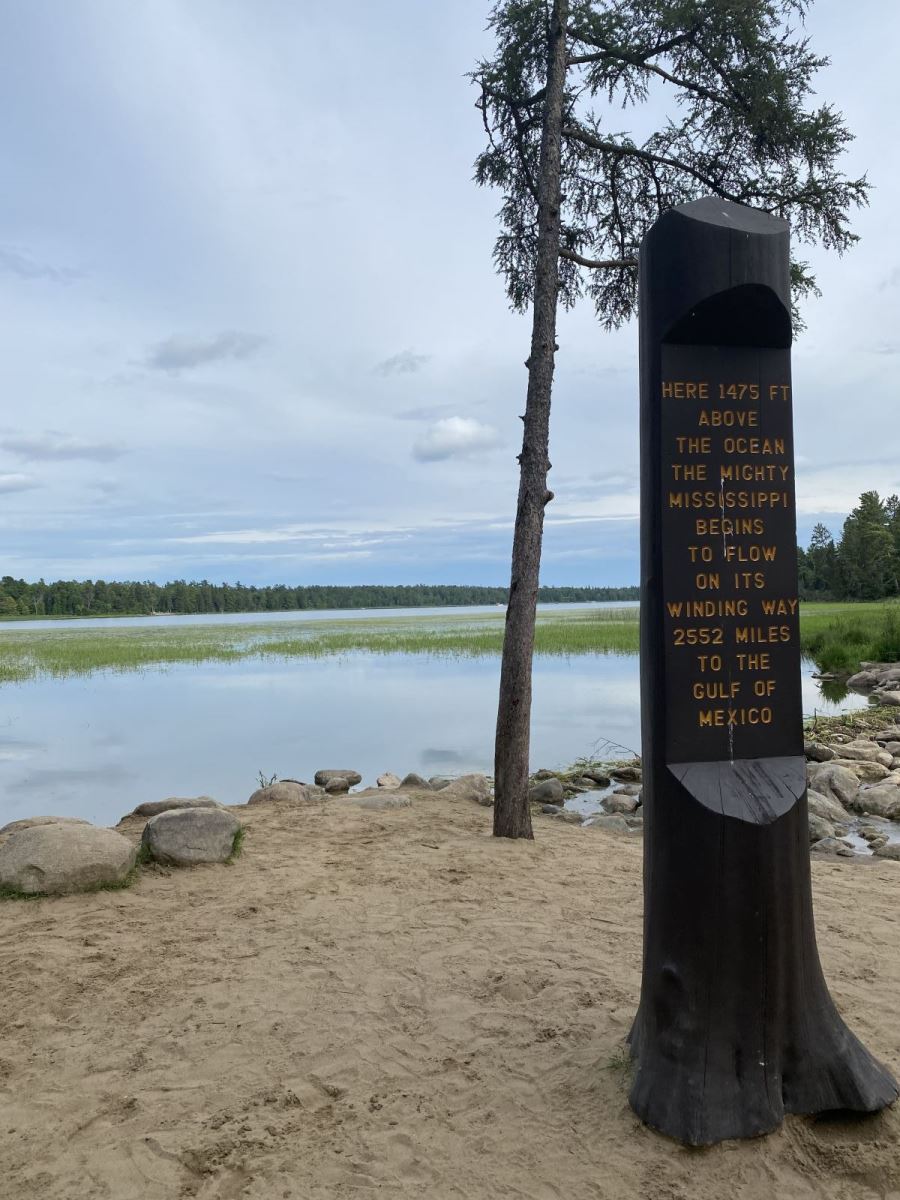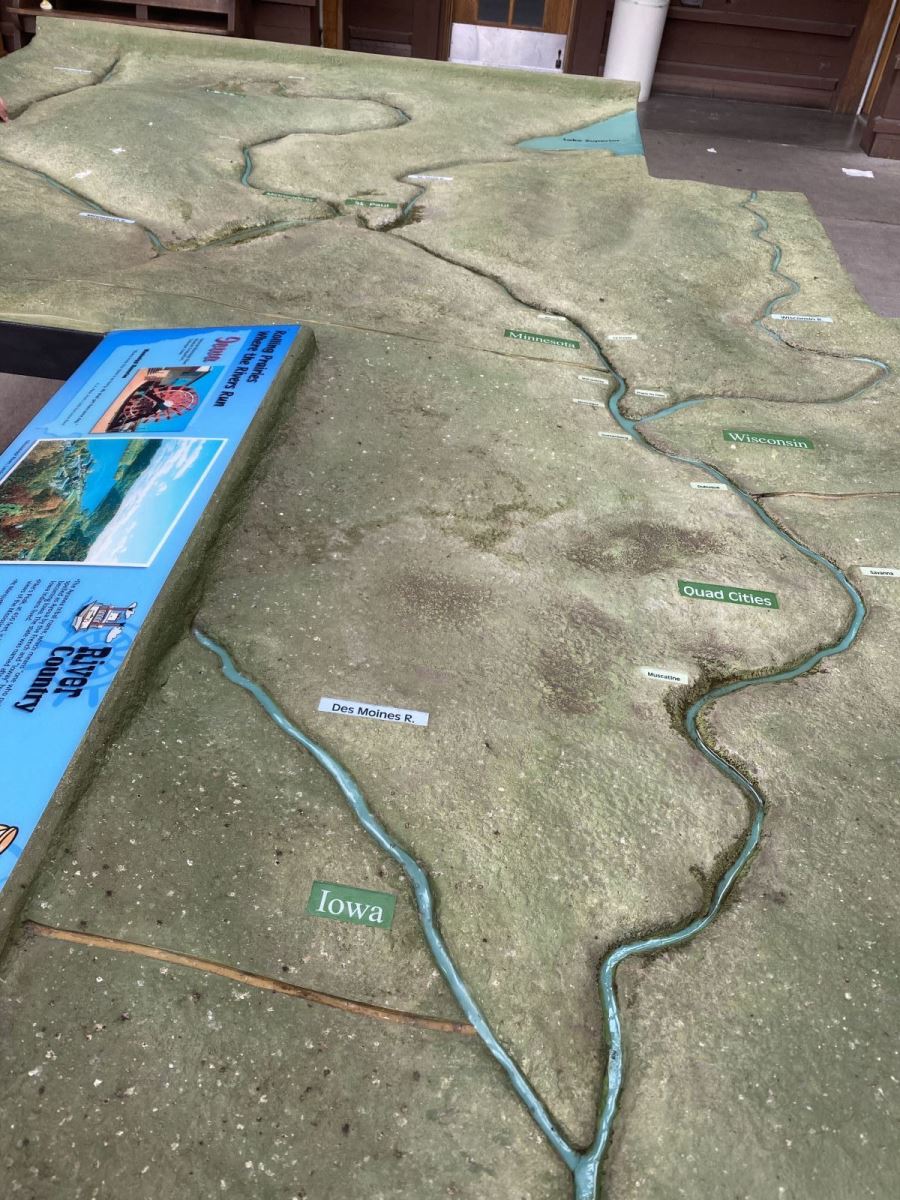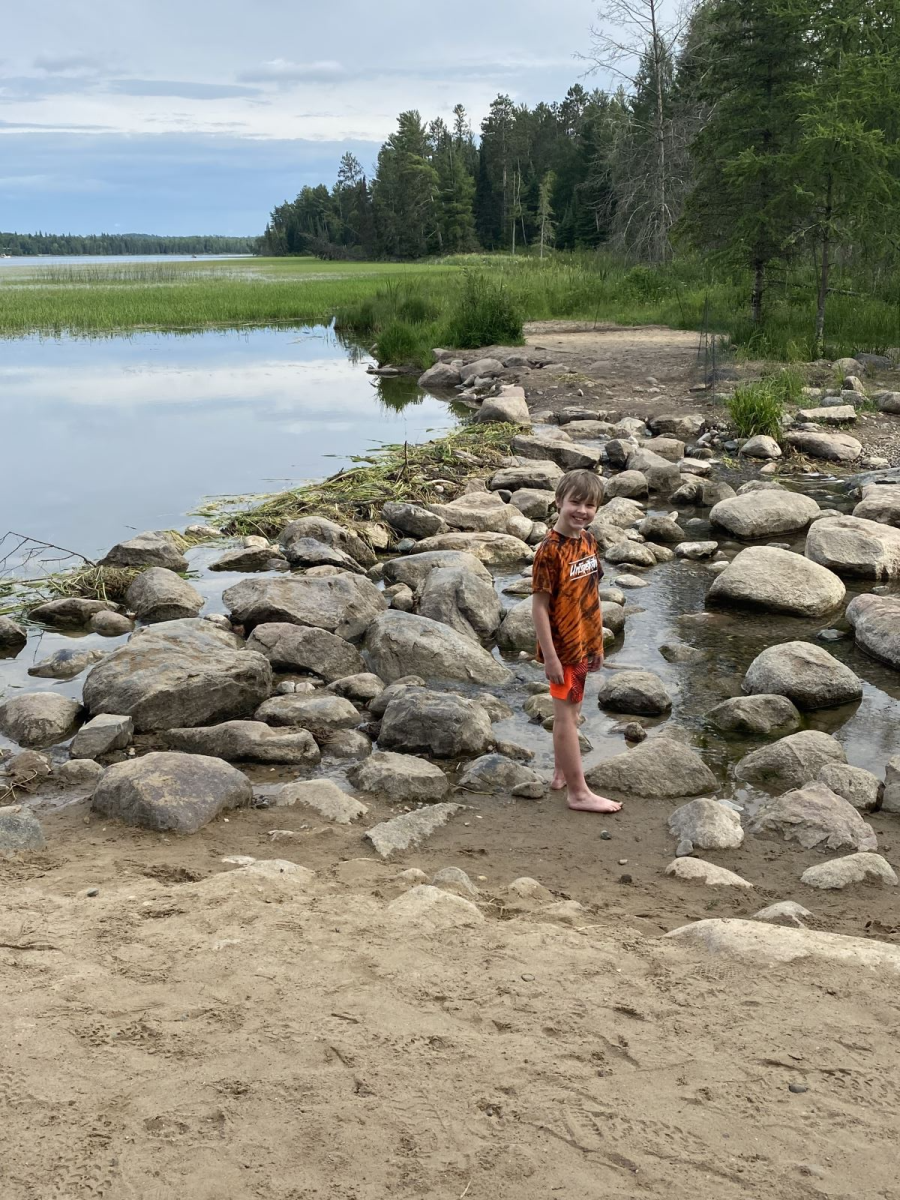Seeing What Lies Ahead for the Mississippi
posted
by Angelisa Belden on Thursday, July 15, 2021
Last month my family finally took our much-anticipated vacation to northern Minnesota. As a child growing up in northeast Iowa, we annually traveled north to camp or stay at a resort with longtime family friends to do all things Northwoods: camping, fishing, swimming, and eating lots of marshmallows.
We continued that tradition this year, heading to Island Lake, just north of Park Rapids. The area is in the heart of Minnesota Lake Country, and just 20 miles from Lake Itasca, the headwaters of the Mississippi River.

It was with much excitement that one day we embarked for Itasca State Park to take our kids across those headwaters, which is only about 15 feet across and barely knee deep at its start. That’s hard to comprehend when you consider the size of the Mighty Mississippi just a few hours south in the Twin Cities, its grand scale by the time it reaches Lansing, IA, or the miles-wide mouth at the Gulf of Mexico.
 On its 2,550+ mile journey through the US, the Mississippi is met by thousands and thousands of tributaries that carve through mostly agricultural land in 32 states and two provinces, totaling 40% of the continental United States, spilling into growing rivers and gathering force as the waters head toward the Mississippi. Those rivers carry storm water, sediment, trash, and other runoff gathered as the water travels downstream.
On its 2,550+ mile journey through the US, the Mississippi is met by thousands and thousands of tributaries that carve through mostly agricultural land in 32 states and two provinces, totaling 40% of the continental United States, spilling into growing rivers and gathering force as the waters head toward the Mississippi. Those rivers carry storm water, sediment, trash, and other runoff gathered as the water travels downstream.
 A great visual at the Headwaters Center illustrates this well. This diorama that enamored my kids helps to drive home an important fact, if you know to look for it. Once you know, it’s plain as day. Of all the nitrogen to reach the Gulf of Mexico, more than 40% comes from Iowa. We have 58 large watersheds that carry our unregulated farm runoff to the two major rivers on our borders. The Mississippi on the Eastern side, the Missouri on the Western side (though it doesn’t join the Mississippi until St. Louis, it travels hundreds of miles of Iowa’s western ‘shore’), And that nitrogen pollution happens primarily because we over-apply and under-regulate nitrogen in our great state.
A great visual at the Headwaters Center illustrates this well. This diorama that enamored my kids helps to drive home an important fact, if you know to look for it. Once you know, it’s plain as day. Of all the nitrogen to reach the Gulf of Mexico, more than 40% comes from Iowa. We have 58 large watersheds that carry our unregulated farm runoff to the two major rivers on our borders. The Mississippi on the Eastern side, the Missouri on the Western side (though it doesn’t join the Mississippi until St. Louis, it travels hundreds of miles of Iowa’s western ‘shore’), And that nitrogen pollution happens primarily because we over-apply and under-regulate nitrogen in our great state.
 As our family stepped carefully across the rock path, splashed with dragonflies, and read about the hunt to find the ‘true mouth’ of the great river, it was fun to say to our kids, “Just think, in three months the water that touched your toes here will be in the ocean!” They giggled and said this was ‘the best day ever’! (Just like the adventure park the day before, and the boat ride before that. Ah, kids!)
As our family stepped carefully across the rock path, splashed with dragonflies, and read about the hunt to find the ‘true mouth’ of the great river, it was fun to say to our kids, “Just think, in three months the water that touched your toes here will be in the ocean!” They giggled and said this was ‘the best day ever’! (Just like the adventure park the day before, and the boat ride before that. Ah, kids!)
But I know that memory will stay with them for the rest of their lives. I wanted it to. I wanted them to see this pristine water, the humble head of a river that fueled a nation's growth.
That’s because I know what lies ahead for this beautiful river.
You can help to protect the Mississippi River by encouraging your Representative to support MRRRI, the Mississippi River Resilience and Restoration Initiative. This proposed federal initiative would provide dedicated federal funds to support restoration and resilience projects along the Mississippi River corridor. Take action now to tell you legislator you support MRRRI.
Take Action
- clean water
- conservation
- nitrate pollution
- phosphorus pollution
- water quality
- water recreation